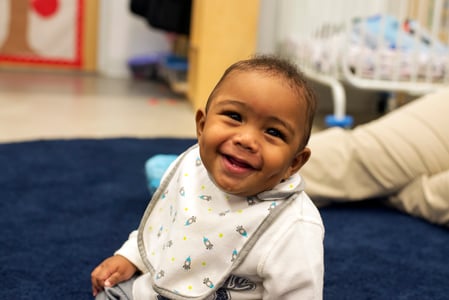
A few months ago, I gave a training to a group of early childhood professionals over the Infant CLASS. As I was going over one of the indicators titled, Awareness and Cue Detection, I read the high range description on the face-page:
“Teachers consistently physically orient toward the majority of the infants and regularly look around the room. Teachers continuously acknowledge infants whether or not they are making bids for attention, by talking to them or giving them a nod or smile.”
After I was done, my group of participants almost collectively said, “So the “good” babies have to be noticed too?”
I smiled and replied, “Tell me more, what do you mean by “good”?
One participant continued, “The “good” babies have to get called on too. You know, the “good” babies that don’t cry or fuss for long periods of time, are easily soothed, usually calm or might have a quiet cry.” The group laughed and nodded in agreement.
Different members of the group began to share their experiences in the classroom both as infant teachers and as coaches. Several of them recounted how the children who cried often received more attention than the children who were calm. Usually, the calm child would receive interactions only when it was time to be fed or time to change their diaper. The participants stated that they hardly saw teachers interact with the “good” babies because they didn’t show cues that they needed any attention.
Both as a teacher and as a coach, I have spent a lot of time in infant classrooms. What is fascinating about the whole experience of my observations is that the teachers never ignored any infant on purpose. I realized there were many times when the “good” baby got ignored in my care, not on purpose but because of the demands of 10 babies to 2 teachers. It’s so much easier to tend to the infant that is crying or hungry, than it is to interact with the child sitting quietly on a mat.
One of the aspects that makes CLASS effective is that it is based in research. We know that when a child receives quality interactions in the early years, it leads to better developmental outcomes. We know how important quality interactions are, and we know that we can begin to see “gaps” in the infant stage of life. We must find ways to be intentional in ensuring that every child receives the attention they deserve, whether they are making bids for attention or not.
So what does this mean for the infants in the classroom? This means that all children should be acknowledged, regardless of what they’re doing or how they’re acting. All babies have different temperaments, just as adults do. The CLASS tool is being in tune and aware of everyone in the classroom—no matter what.

